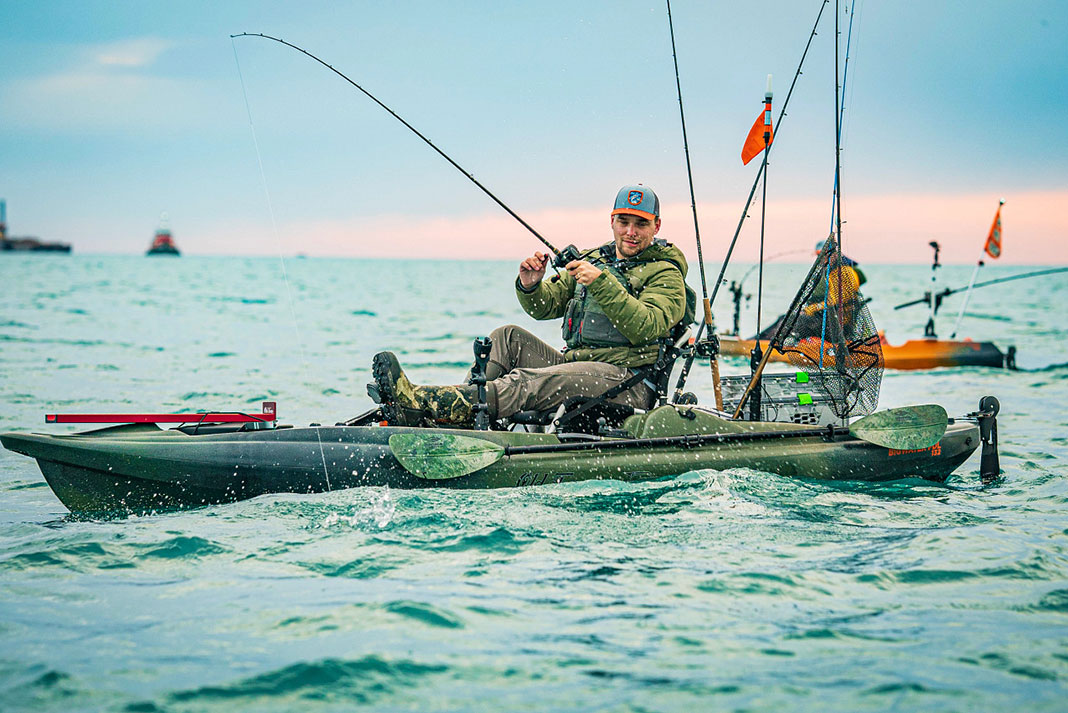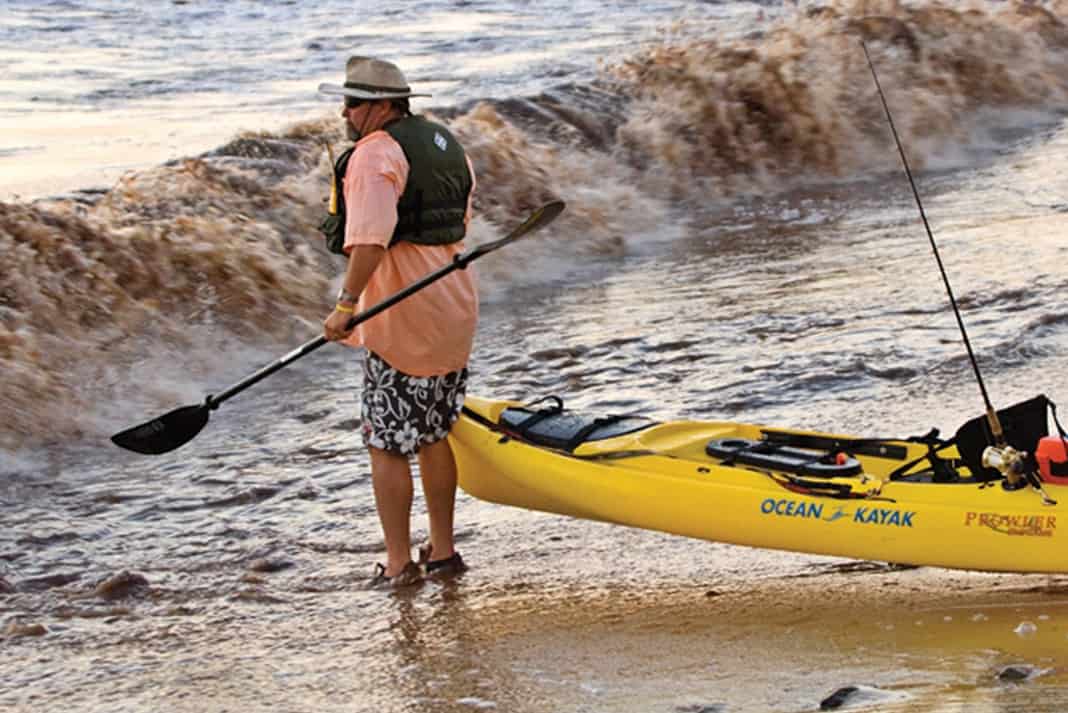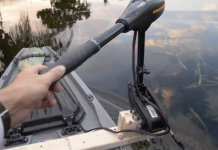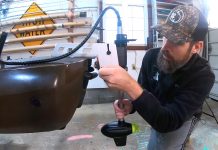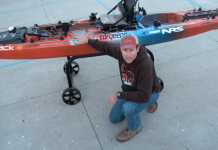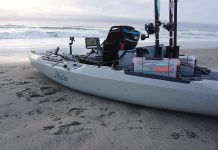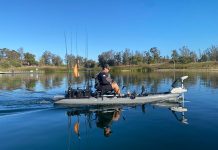Iexpected the worst even before I left the beach—and I wasn’t disappointed. I punched through the first breaker by lowering my head and pointing my paddle at the oncoming wall of water. I wasn’t so lucky when the second wave struck. After a spin cycle in the washing machine, I surfaced spitting water and searching for my stuff. Luckily, my kayak was rigged to flip and ready for the potential pitfalls of a surf launch.
Rig Your Kayak to Survive a Surf Launch
For the best chance at a successful surf launch, start with a kayak designed for open-water paddling. Look for a long, lean boat that will paddle fast. This is no place for a flat bottom or tri-hull common on standup boats. Opt for rocker and a flared bow that will cut through the waves. Rudders and propellers may create drag that can slow a boat down in the surf and could cause it to flip. I raise them up when I paddle through the surf zone.
A high seat can also be a liability during a surf launch. Not only does a high seat create a higher center of gravity, but in the event of a turn in the wash, the seat could fall out, break or strike the angler. Remember, anything that can break probably will.
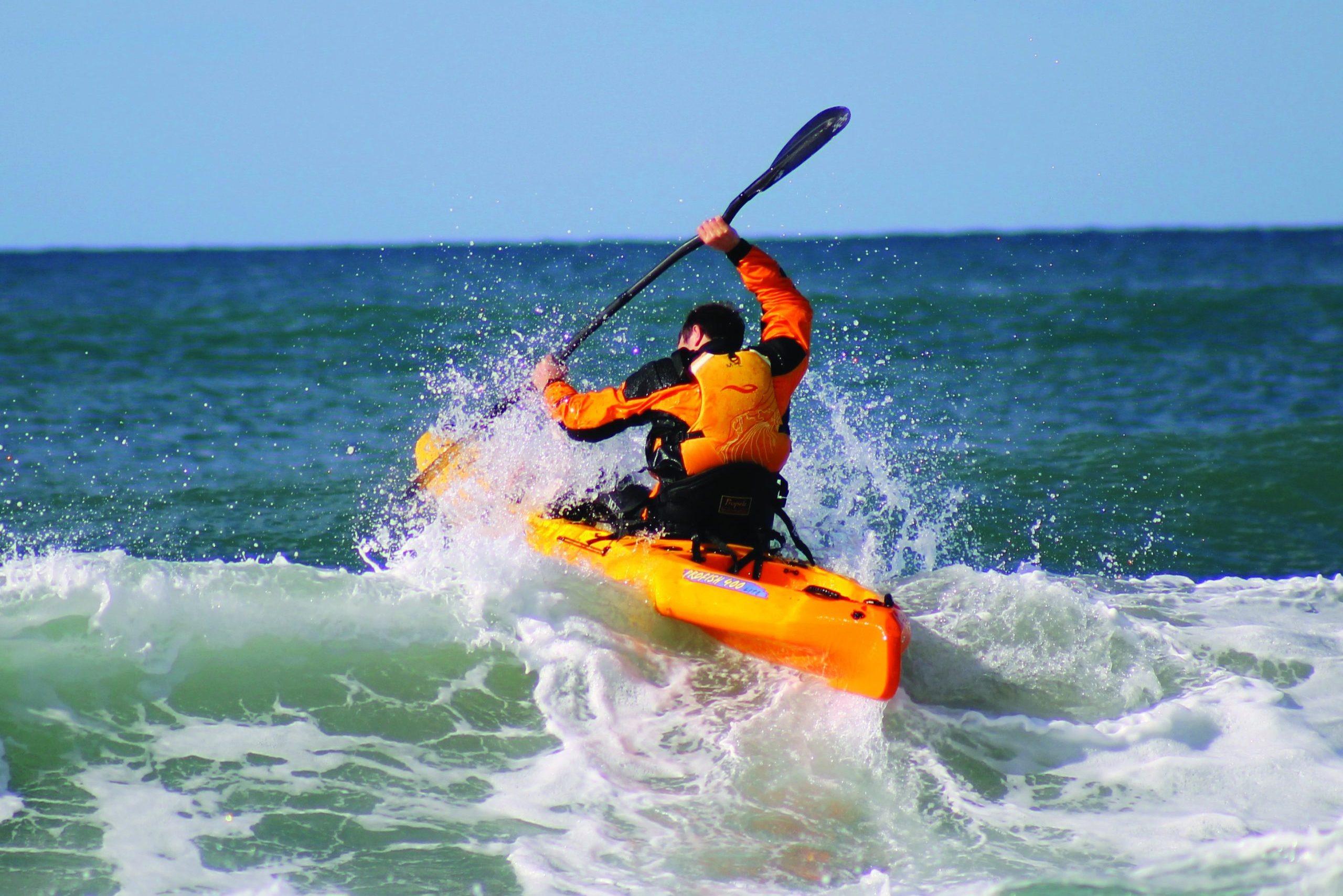
Simplify Your Setup for a Surf Launch
Topside rigging needs to be minimalist and tough. When I’m launching through the surf, I leave my fish finder and transducer behind. I only use flush-mount rod holders. Cameras, water bottles and tackle boxes are stored in the crate until I reach the other side of the breakers.
I don’t like rod and paddle leashes. They get in the way when I’m fishing and if the kayak turns over I worry that I could become tangled in the leashes. Ideally, I keep my rods in the hull. A boat with a large center hatch makes this easier. Or I remove the lures and the reels and slide the rods in my bow hatch. When I’m out of the breakers and on open water, I’ll run a bungee on my crate through the reels to secure them to the kayak.
Prepare in Advance for Potential Pitfalls
Carrying gear is another challenge. Some guys don’t use a crate. Instead they store gear and tackle in dry bags that are secured to the kayak. Boats with a large center hatch offer a secure place to store gear. On my boat I use a YakAttack BlackPak that I have strapped to my kayak in four corners. Then, I cross bungees over the lid to keep gear inside.
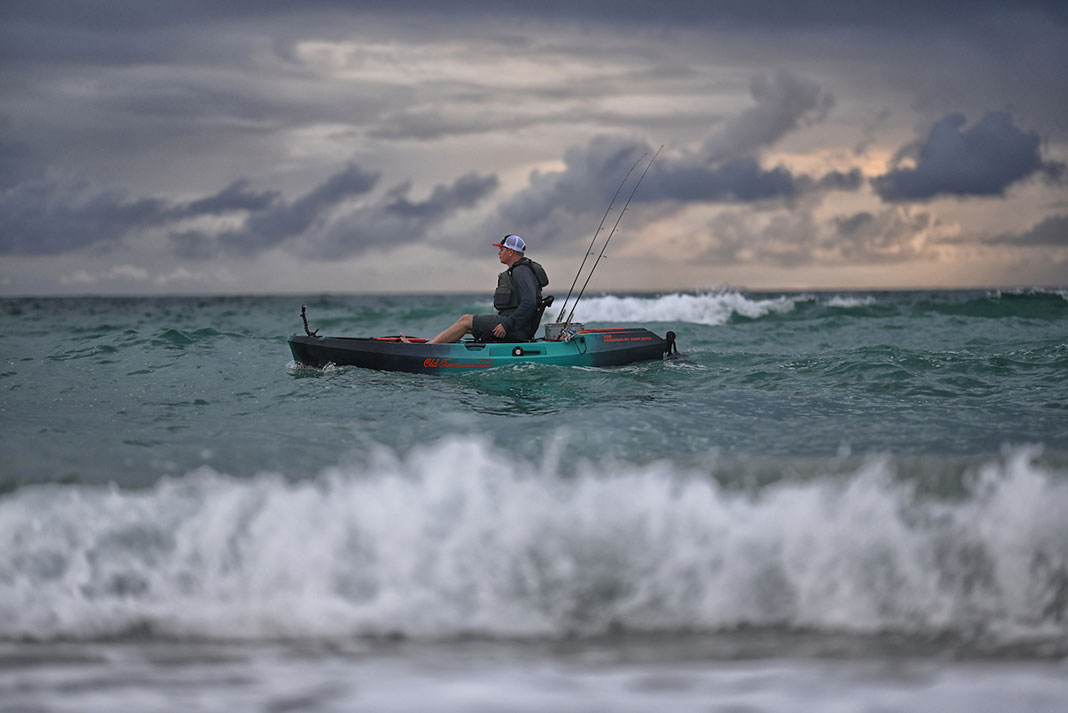
I even dress to flip. On one memorable wipe out, I surfaced to find that every pocket in my PFD was filled with sand. I now make sure all my pockets are zipped closed. If the water is cold, I go with a full drysuit. In warm weather, I wear lightweight paddling pants, water socks and long sleeve sun shirt. I’ll secure my hat and sunglasses in my crate until I cross the bar.
Smart Rigging Will Save Your Stuff
Ultimately, sacrificing tackle and gear is the price of open-ocean kayak fishing. The key is to minimize losses with smart rigging. When playing in the surf zone, expect that anything that can go wrong probably will.
For the best chance at a successful surf launch, start with a kayak designed for open-water paddling. | Feature photo: Tim Taylor

